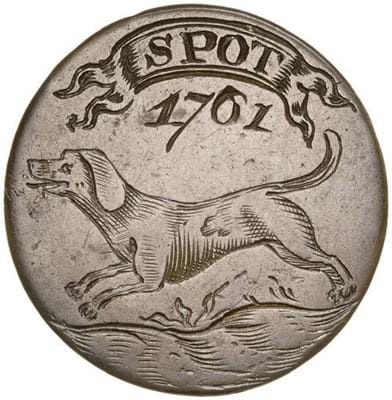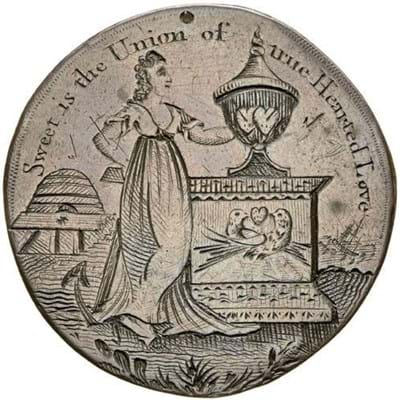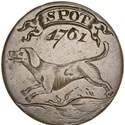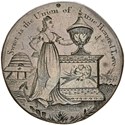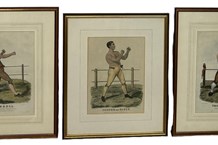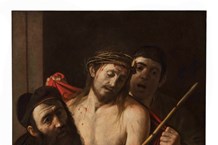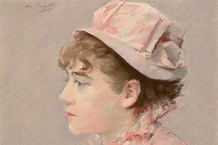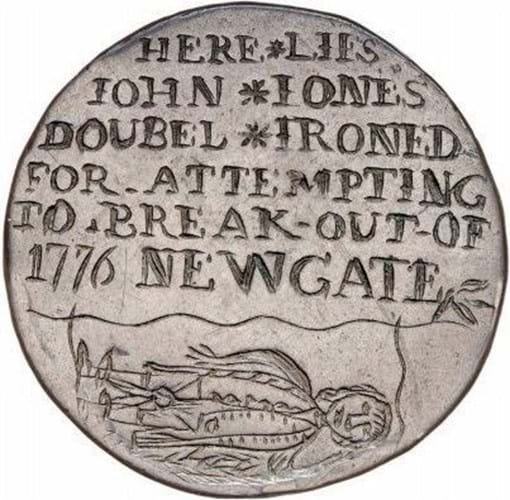
This token from the Timothy Millett collection tells the story of a thief who, sentenced to hang, attempted escape from Newgate Prison. It reads Here Lies John Jones Doubel [sic] Ironed for attempting to break out of Newgate, June 19, 1776.
“Rather than latch on to a Roman gold aureus or a Renaissance medal, the first thing that grabbed me in the numismatic world was a group of defaced 1797 cartwheel pennies and most notably one with the legend Gibbs Lord Mayor, Pelted with Rotten Eggs 1845,” he says.
The image of Britannia to the reverse had been ‘modified’ so she was visibly defecating on the etched caricature of Alderman Michael Gibbs, who Millett later learned was the chairman of the Poor Law Commission. It became his first purchase.
From ad hoc scratchings and punch marks to full-scale reengraving of surfaces, mundane mass-produced coins from the 18th and early 19th centuries were frequently repurposed to communicate personal and public messages of all types.
The best known are the Sailor’s Farewells or the pin-pricked ‘leaden hearts’ inscribed by convicts as they awaited transportation. However, others were simply made for humour, to be carried as ‘pocket pieces’ or sold at country fairs, political meetings or public hangings.

This coin from the Timothy Millett collection is simply inscribed The man who did this was born without a shirt 1840. Using a phrase popularised at the time by author and journalist Piece Egan (1772-1849), it conveys a pride in literacy and the ‘radical’ idea that all men are born equal.
Collecting revival
Millett has chosen to call his new book on the subject Tokens of Love, Loss and Disrespect.
There was a time, he recalls in the opening chapter, when such things ranked low on the numismatic ladder. In fact, his current collection of 315 pieces “owes its existence in one important way to numismatic conventions that consigned these ‘damaged’ objects to obscurity and kept auction prices relatively low until the later 20th century”.
Millett was not the first to collect them (records suggest that they first began to pique collecting interests in the late 19th century) but he was one of the few enthusiastic buyers of his generation. As recently as 1994 he bought a lot of seven leaden hearts for £30 when Bonhams sold the Dennis Vorley collection.
Today his holdings are considered the largest and most varied of its type. He explains their appeal.
“As a dealer, most of the objects I encounter are the work of the established order – the products of industrial manufacture. Engraved coins are the polar opposite. Far from speaking for the establishment here are coins that voice people’s feelings, regularly at the expense of those in authority.”
Not even the most magnificent of Hanoverian portrait medals can convey quite as much sentiment as three old copper pennies inscribed with the legends A Mad King and a Nation of Fools, William 4th The Idiot King or Down with Prince Albert.
It was as plebeian social history rather than ‘coins or tokens’ that ultimately set these numismatic ‘also-rans’ on a new price trajectory.
“Historians came at them from a completely different angle and recognised their significance,” says Millett. “Museum curators – beyond specialist departments of coins and medals – began to make space for the stories such objects told.” He is surprised how many from a younger generation deem his collection ‘cool’.
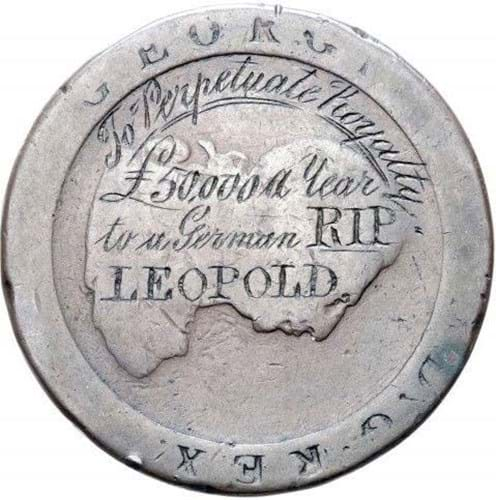
When Prince Leopold of Saxe Coburg (1790-1865) left the UK to become the first King of the Belgians in 1931, the annuity granted to him by Parliament was controversially renounced. This cartwheel penny from the Timothy Millett collection is engraved To Perpetuate Royalty, £50,000 a Year to a German RIP Leopold.
An important event was the 1998 travelling exhibition Convict Love Tokens held first at the Powerhouse Museum in Sydney and then at other museums in Australia. Millett provided many of the exhibits, coedited the accompanying catalogue, and ultimately sold this part of his collection to the National Museum of Australia. Today a good ‘leaden heart’ with a proven history will bring over £1000.
There are some fine convict tokens in the book (Millet tells a great story surrounding two tokens made, seemingly by the same hand, for unfortunates William Kelly and Thomas Spicer in 1818). However, having already ‘done’ this subject justice, many broader and less familiar are considered in serious detail for (at least in print) the first time.
Subversive purposes
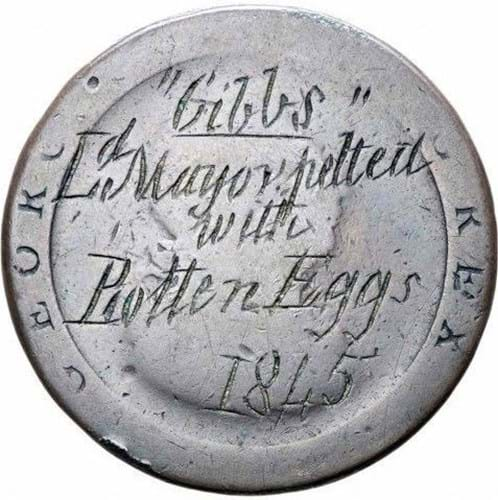
A defaced 1797 cartwheel penny from the Timothy Millett collection engraved Gibbs Lord Mayor, Pelted with Rotten Eggs 1845. The image of Britannia to the reverse includes a caricature of Alderman Michael Gibbs.
Published in January, with over 360 pages and 900 illustrations, the volume considers the histories behind many of these mementoes and the unofficial or subversive purposes they served. There are contributions from 11 numismatists, historians and collectors – and a cartoonist (Martin Rowson).
University of Sussex professor Tim Hitchcock, for example, discusses the new prison culture that emerged following the outbreak of the American Revolution in 1776, evidenced in a growing number of convict tokens made in Newgate.
Hamish Maxwell Stewart (University of Tasmania) examines love tokens illustrated with the Sailor’s Farewell while Steve Poole (University of the West of England) considers the penal code and tokens made as souvenirs of public hangings.
The format also includes an annotated catalogue of 100 coins from the collection, each selected as representative examples of a distinctive type or simply for their individual interest.
After all, who couldn’t be intrigued by a coin crudely etched with the words The man who did this was born without a shirt 1840?
Tokens of Love, Loss and Disrespect is priced £45. ISBN: 978 1 911300 94 6


